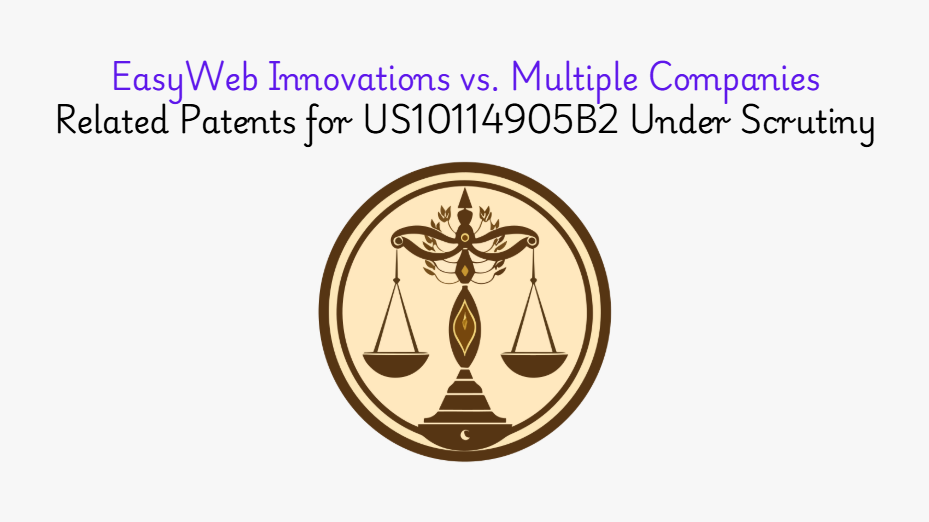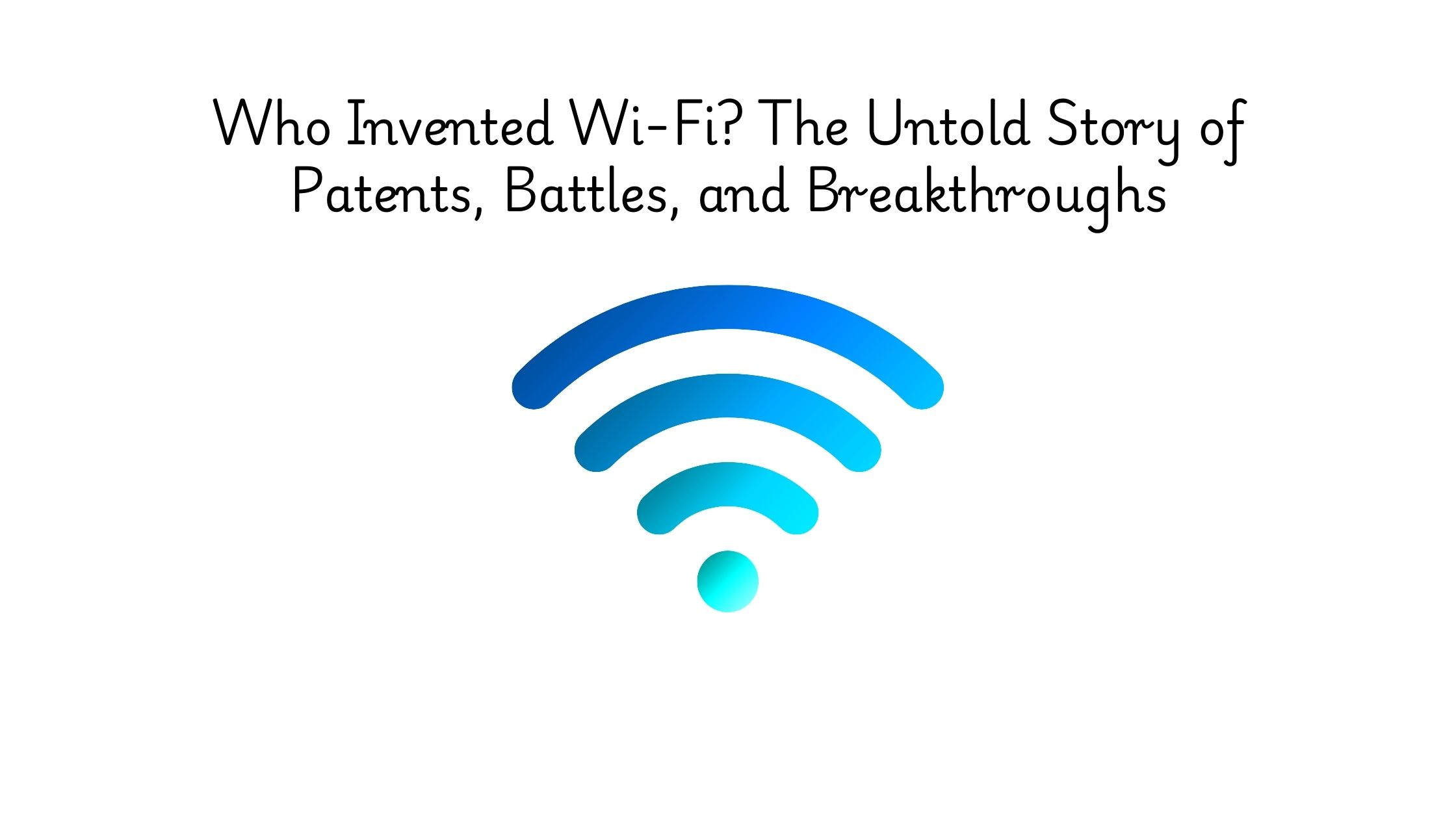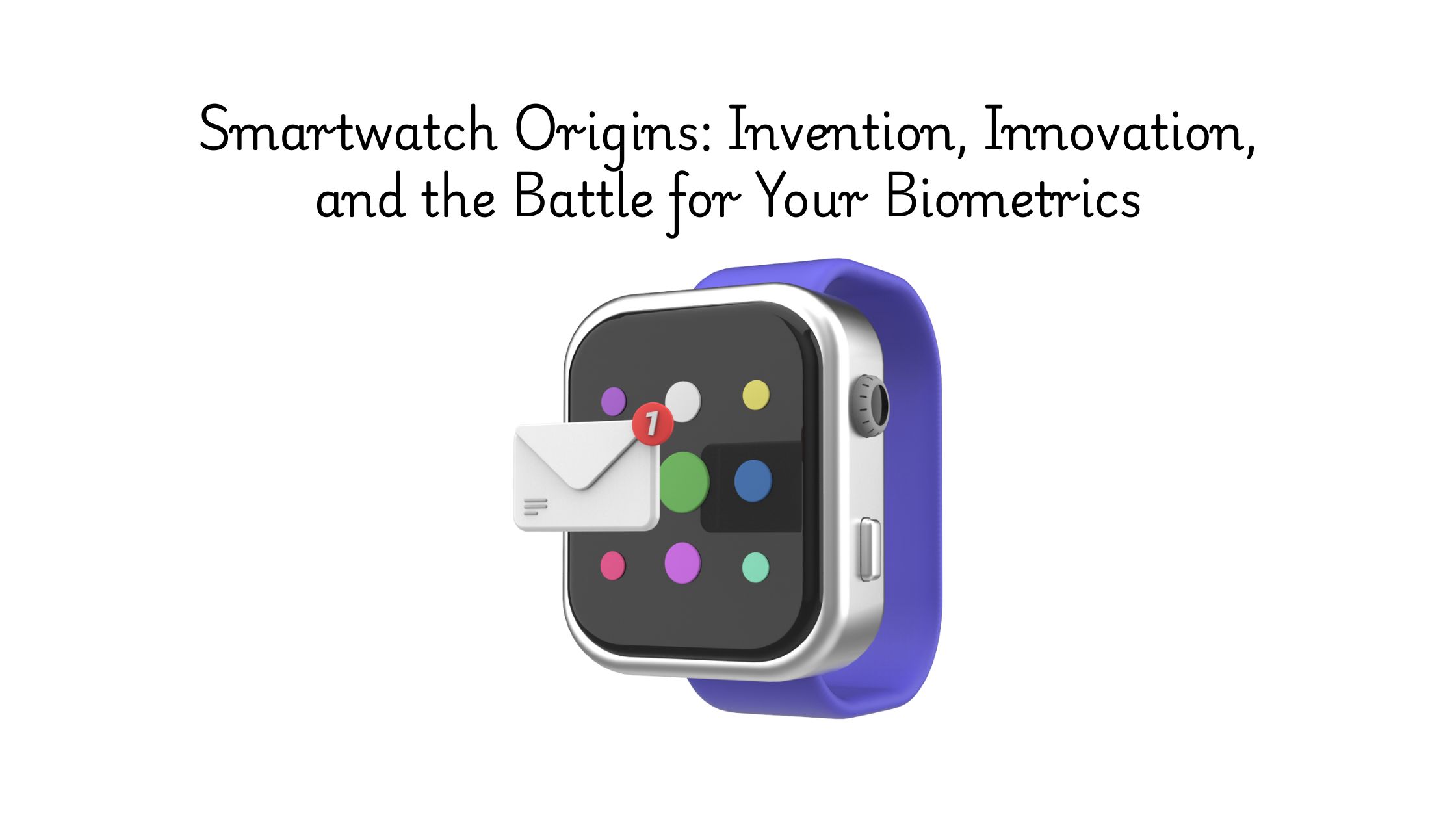Could this patent face a challenge? EasyWeb Innovations LLC, a non-practising entity (NPE), has initiated lawsuits against multiple companies, targeting US10114905B2 for alleged patent infringement. With five active cases and several other patents in litigation, EasyWeb Innovations is asserting its intellectual property rights across different industries. But what exactly does this patent cover, and why is it under such intense scrutiny?
US10114905B2 pertains to technology that enhances web-based processes, particularly focusing on improving user interactions with online platforms. The invention involves methods and systems for tracking user actions on websites, enabling businesses to optimize the user experience through real-time data. This patent is targeted because it addresses core functionality that many online services rely on, potentially affecting a wide range of companies that might be using similar methods without licensing or permission.
Understanding the details of US10114905B2 is key to evaluating its significance in the ongoing litigation. The Global Patent Search tool can assist in identifying related patents, allowing you to assess potential patent risks and gather data-driven insights for a more informed analysis. Let’s explore the patent and examine why it is a focal point in these cases.
Understanding Patent US10114905B2
US10114905B2 addresses a computer-implemented method for providing customizable, multi-level user authorization to access a computer system. The core innovation is that it allows individual users to select their security schemes based on personal preferences for convenience and security rather than applying a single scheme across all users. This system enables flexibility and higher security by accommodating varying levels of identification requirements for different users.
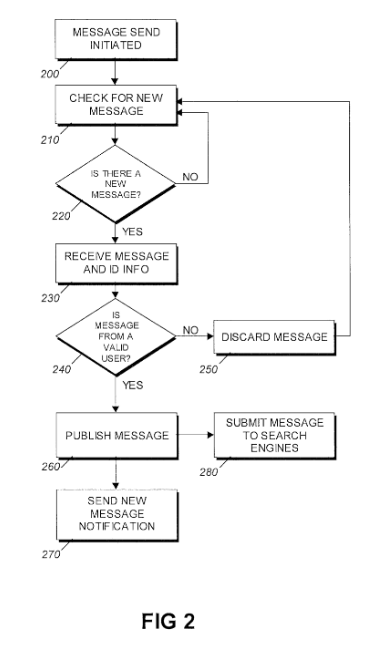
Source: US10114905B2
Its four key features are:
#1. User customizable security scheme: Each user selects their preferred security scheme from a set of available options. These schemes require different levels of identification information, allowing the user to balance security and convenience.
#2. Multiple security levels: The patent introduces at least two types of security schemes: one requiring basic identification and another with higher security requirements, such as additional verification steps.
#3. Account-based security preferences: Each user’s choice of security scheme is stored in their individual account, ensuring the system adapts to their unique preferences.
#4. Dynamic access authorization: Users are authorized based on comparing provided identification information against the stored preferences in their account. Access is denied if the identification does not match the selected security scheme.
This patent is highly relevant in the context of ongoing litigation because it addresses fundamental methods for securing user access to computer systems, a technology used by various digital platforms. Many companies that manage large-scale user access systems might unknowingly be using methods that overlap with those claimed in US10114905B2, making this a critical patent in disputes involving access control and security systems.
Related Patent Reference for US10114905B2
#1. US7032030B1
This patent, filed on March 10, 2000, describes a system for publishing messages over a network, where incoming messages are received and processed for distribution. It involves user authentication and access restriction to certain messages based on identification signals. The technology aligns with US10114905B2’s use of secure access methods, though it does not fully implement the multi-level security schemes described in US10114905B2.
Key Features of this Related Patent:
- Identification signals for user authorization – The reference outlines a method for authorizing access to messages using identification signals. While it includes some elements of user authentication, it lacks the multiple independent security scheme options found in US10114905B2.
- User accounts and storage areas – This reference describes using user accounts and storage areas for message management. However, it does not detail the user-specific security scheme preferences stored in the accounts, as described in US10114905B2.
- Message publishing and security features – Both patents involve securing access to published messages, but US7032030B1 does not specify the user-driven selection of security schemes or multi-level security options.
Which features of US10114905B2 are disclosed by US7032030B1?
| Key Feature of Claim 1 | Disclosure Status |
| A plurality of security schemes are provided, where each scheme requires different identification information to authorize user access | Partially Disclosed |
| The selected security scheme preference is stored in the user’s storage are.a | Partially Disclosed |
| System access is granted when the user satisfies their selected security scheme. | Partially Disclosed |
| System access is granted when the user satisfies their selected security scheme | Partially Disclosed |
Key Excerpt from US7032030B1:
“The system for publishing a message includes receiving an incoming message over a network and authorizing user access based on identification signals. The system manages user accounts and storage areas to store messages. Access to the messages is granted based on the user’s identification, ensuring that only authorized users can access specific content.”
#2. EP2270668A1
This patent, filed on April 26, 1996, describes a system for storing and delivering messages based on user preferences. It involves routing messages to intended recipients while maintaining confidentiality and ensuring that messages are delivered according to user preferences. The patent shares similarities with US10114905B2 regarding user-specific preferences for managing access to messages, though it does not fully implement multi-level security schemes that allow users to select their security settings independently.
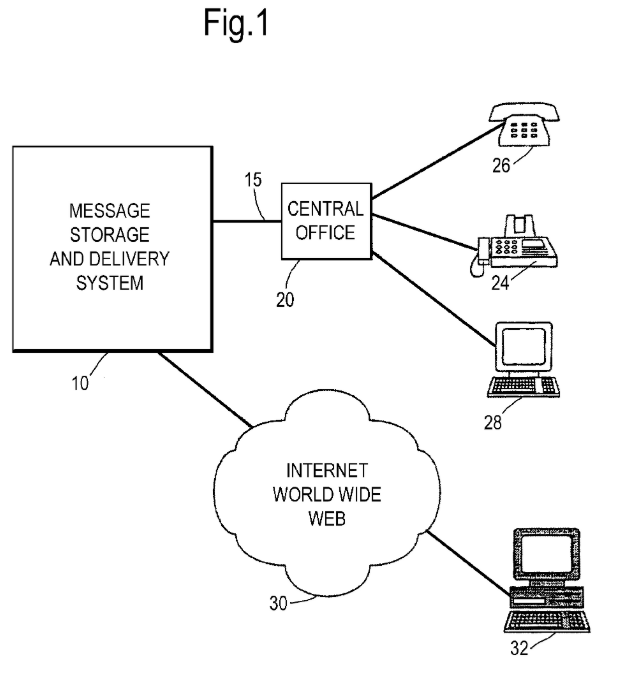
Source: EP2270668A1
Key Features of this Related Patent:
- User preferences for message delivery – The reference discusses delivering messages based on user preferences, which could involve security elements, but it does not describe multiple security schemes or user-driven selection as in US10114905B2.
- User accounts with associated storage areas – This patent clearly mentions the use of user accounts with storage areas for messages, which is a common feature between both patents.
- Message routing for confidentiality – Both patents focus on routing messages securely to the correct recipients, ensuring confidentiality. However, US10114905B2 adds complexity with its multi-level security system, which is not present in this reference.
Which features of US10114905B2 are disclosed by EP2270668A1?
| Key Feature of Claim 1 | Disclosure Status |
| A plurality of security schemes are provided, where each scheme requires different identification information to authorize user access | Partially Disclosed |
| User accounts with respective storage areas are arranged in the computer system | Fully Disclosed |
| The selected security scheme preference is stored in the user’s storage area | Partially Disclosed |
Key Excerpt from EP2270668A1:
“The system provides a method for storing messages and delivering them to intended recipients. The system can route messages based on user preferences, ensuring that messages are securely delivered according to confidentiality requirements. User accounts are associated with storage areas, where messages are stored until they are retrieved by the intended recipients.”
#3. US20020032742A1
This patent, filed on August 29, 2001, describes a system for centralized storage and management of electronic messages. The invention focuses on protecting messages using encryption and private passwords or keys. Although it incorporates security measures for managing message access, it does not fully address multi-level security schemes or allow users to select their security settings as described in US10114905B2 independently.
Key Features of this Related Patent:
- Encryption and security mechanisms – The reference discusses using encryption to secure messages and prevent unauthorized access, which aligns with the general concept of securing access to electronic messages. However, it does not describe the multi-level, user-driven security scheme selection as in US10114905B2.
- Centralized message storage and management – This patent introduces the concept of a centralized system where messages are securely stored and managed. While this aligns with US10114905B2 regarding securing access, it does not cover the individualized preferences for security schemes.
- Authorization based on security measures – Both patents grant access to messages based on security requirements, but US20020032742A1 does not detail multiple security schemes that users can choose from independently.
Which features of US10114905B2 are disclosed by US20020032742A1?
| Key Feature of Claim 1 | Disclosure Status |
| User accounts with respective storage areas are arranged in the computer system. | Partially Disclosed |
| System access is granted when the user satisfies their selected security scheme. | Partially Disclosed |
| System access is granted when the user satisfies their selected security scheme | Partially Disclosed |
Key Excerpt from US20020032742A1:
“The invention provides a system for efficiently storing and distributing electronic messages with an emphasis on encryption for securing access. The system allows for managing and routing messages according to user preferences and ensures that only authorized users can access the stored messages.”
#4. JP2000209261A
This patent, filed on January 19, 1999, by Matsushita Electric, NTT Mobile Communication Network Inc., and their affiliates, describes a mobile terminal designed for receiving data transmissions, such as incoming call notifications and PUSH messages. It emphasizes the management and storage of incoming data but does not explicitly address multiple security schemes or user-driven security scheme selection as described in US10114905B2.
Key Features of this Related Patent:
- PUSH message storage and handling – The patent discusses handling and storing PUSH messages, which are notifications or updates sent to the mobile terminal. While this concept relates to data management and security in message delivery, it does not cover multi-level security schemes or user selection of security preferences.
- Mobile terminal data transmission – The focus of this patent is primarily on mobile data transmission and receiving notifications over a mobile phone network, which is unrelated to the multi-level security and user-specific preferences in US10114905B2.
- No user-specific security scheme selection – The patent does not allow users to independently select their security scheme for accessing the system, making it different from the feature described in US10114905B2.
This is how feature mapping from the tool looks like:
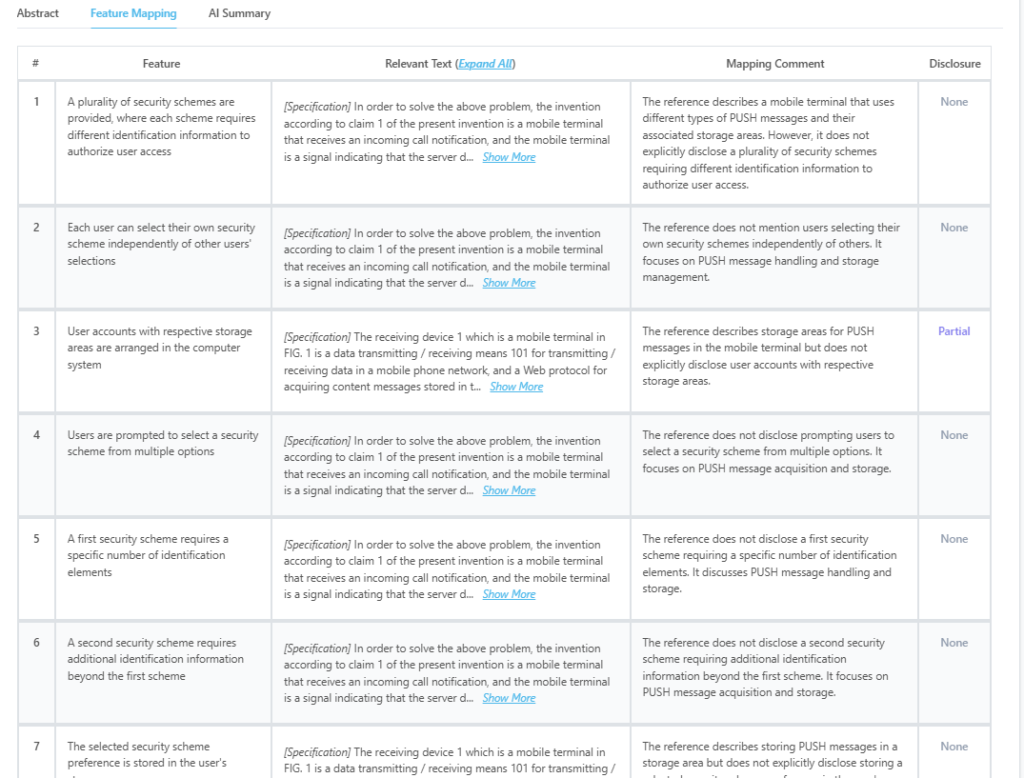
Source: GPS
Which features of US10114905B2 are disclosed by JP2000209261A?
| Key Feature of Claim 1 | Disclosure Status |
| User accounts with respective storage areas are arranged in the computer system | Partially Disclosed |
Key Excerpt from JP2000209261A:
“The invention provides a mobile terminal capable of receiving incoming call notifications, with a data transmission means for receiving data from the network and storing messages according to the received data. This system ensures the effective management and delivery of messages, including content stored in dedicated memory areas of the terminal.”
#5. CA2303278A1
This patent, filed on August 11, 1998, by Thomas Amon, describes a system for providing provider-selected messages in response to user requests over a computer network. The system maintains state information about whether a user has previously received a qualifying message, but it does not explicitly address the multi-level security schemes or user-driven security scheme selection described in US10114905B2.
Key Features of this Related Patent:
- State information for user qualification – The system tracks whether a user has previously received a provider-selected message. This is related to managing user interactions but does not directly address security schemes or identification for system access.
- No specific user-driven security scheme selection – While the patent involves state information to determine access to messages, it does not disclose a system where users can independently select from multiple security schemes.
- No explicit multi-level security schemes – The focus is on maintaining state information about users’ previous interactions with the system rather than providing multiple, distinct security schemes for user access.
Which features of US10114905B2 are disclosed by CA2303278A1?
| Key Feature of Claim 1 | Disclosure Status |
| A plurality of security schemes are provided, where each scheme requires different identification information to authorize user access | Partially Disclosed |
| User accounts with respective storage areas are arranged in the computer system | Partially Disclosed |
| The selected security scheme preference is stored in the user’s storage area | Partially Disclosed |
| System access is granted when the user satisfies their selected security scheme | Partially Disclosed |
Key Excerpt from CA2303278A1:
“The system maintains state information sufficient to determine whether a user has previously received a qualifying provider-selected message. If the user has met the qualification criteria, the user is granted access to the requested message. The system tracks interactions based on prior user requests, using state information stored either by the provider or the user.”
Feature Comparison Table
| Key Feature of Claim 1 | US7032030B1 | EP2270668A1 | US20020032742A1 | JP2000209261A | CA2303278A1 |
| A plurality of security schemes are provided, where each scheme requires different identification information to authorize user access | Partially Disclosed | Partially Disclosed | Partial | Not Disclosed | Partial |
| Each user can select their own security scheme independently of other users’ selections | None | None | None | None | None |
| User accounts with respective storage areas are arranged in the computer system | Partially Disclosed | Full | Partial | Partial | Partial |
| Users are prompted to select a security scheme from multiple options | None | None | None | None | None |
| A first security scheme requires a specific number of identification elements | None | None | None | None | None |
| A second security scheme requires additional identification information beyond the first scheme | None | None | None | None | None |
| The selected security scheme preference is stored in the user’s storage area | Partially Disclosed | Partial | None | None | Partial |
| System access is granted when the user satisfies their selected security scheme | Partially Disclosed | Partial | Partial | None | Partial |
How to Find Related Patents Using Global Patent Search
Finding related patents is crucial in evaluating the potential impact of prior art on the validity of a patent. The Global Patent Search (GPS) tool streamlines this process and allows you to make data-driven decisions that can enhance your legal strategy. Here’s how to efficiently use the GPS tool to find related patents:
Search for and Instantly retrieve relevant patents: Enter the patent number or description to search for related patents within a specific technological field.
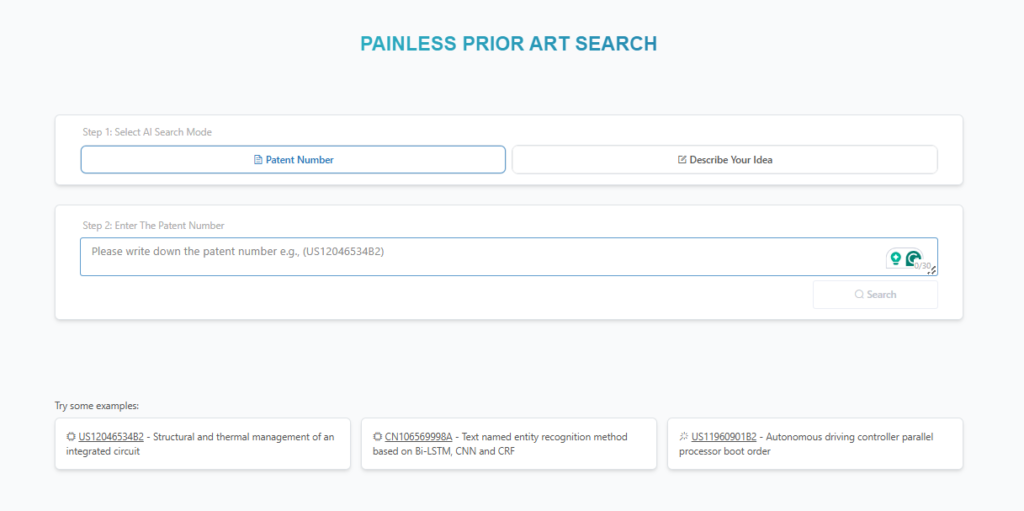
Source: GPS
Compare key features: GPS’s advanced feature mapping system allows you to compare the core claims of your subject patent with related patents.
Browse curated results: Once the search is complete, you’ll be presented with a list of related patents.
Evaluate feature disclosure: GPS provides a comprehensive feature mapping report, breaking down each related patent’s disclosure of specific features.
Refine your legal strategies: With verified related patents at your disposal, you can make confident decisions on whether to move forward with litigation or settlement.
GPS helps identify the most relevant references, strengthening your legal argument. Using Global Patent Search ensures you have all the relevant data at your fingertips, enabling you to navigate patent litigation precisely and confidently.
Take the Guesswork Out of Related Patents Research
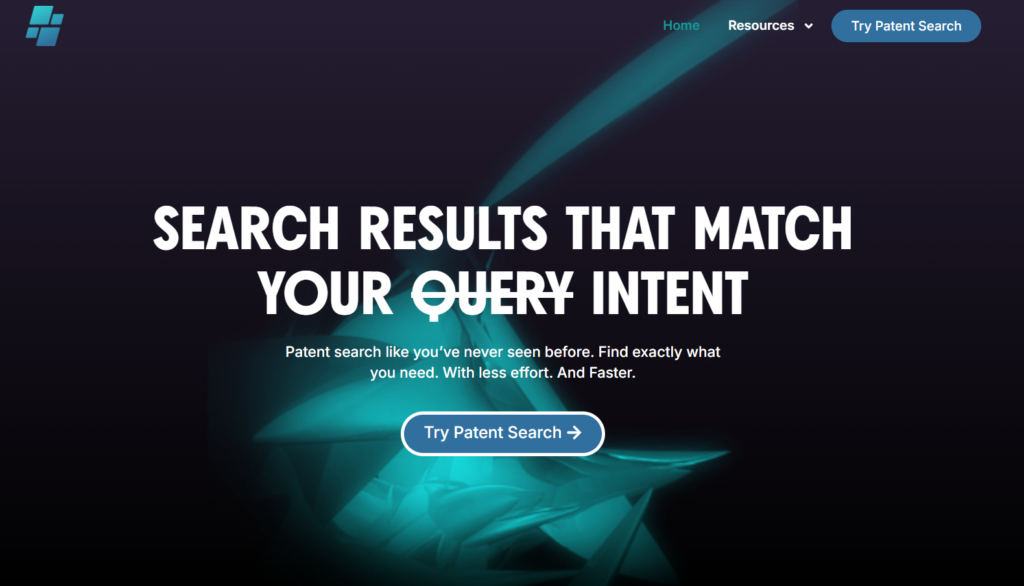
Patent disputes can be complex and time-consuming, but finding related patents doesn’t have to be. The Global Patent Search (GPS) tool provides the resources to streamline your search and enhance your legal strategies. With the right insights, you can make informed decisions that strengthen your case.
- Instant results – No more tedious manual searching. Get the results you need right away.
- Accurate feature mapping – Identify key overlaps with precision and understand how prior art affects your claims.
- Data-driven insights – Access verified related patents and make confident decisions based on comprehensive, detailed reports.
Ensure you have the best related patents at your fingertips and stay ahead of the curve in patent litigation. Start your search with the GPS tool today!
Disclaimer: The information provided in this article is for informational purposes only and should not be considered legal advice. The related patent references mentioned are preliminary results from the Global Patent Search (GPS) tool and do not guarantee legal significance. For a comprehensive related patent analysis, we recommend conducting a detailed search using GPS or consulting a patent attorney.

